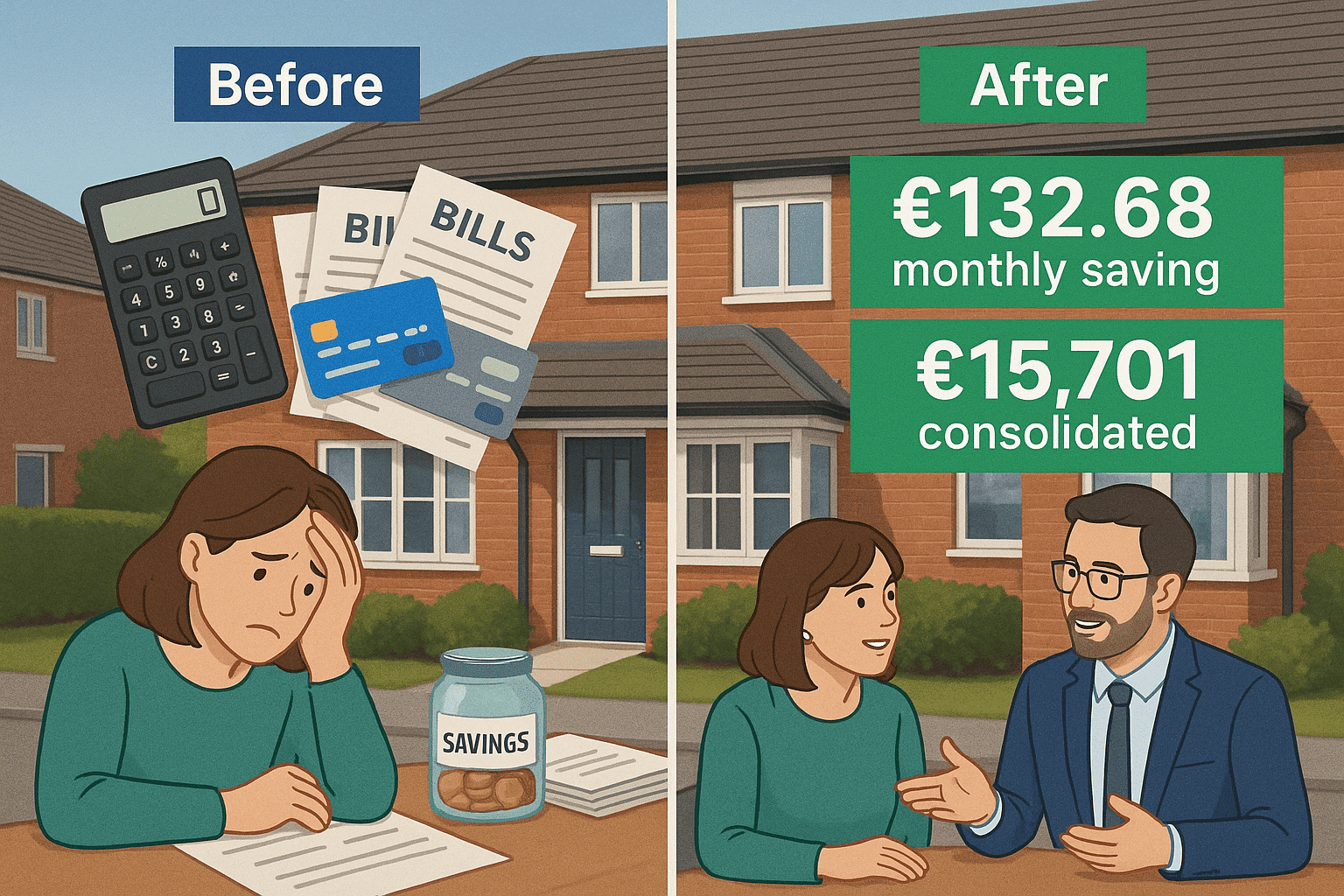Customer Overview: Planning Ahead for a Home Remortgage
Anonymised for privacy, our customer is a homeowner in her mid-40s, working in the healthcare sector and residing in the South East of England. She purchased her family home two years ago for approximately £350,000 and currently holds a mortgage with a leading UK high street bank.
With her fixed-rate remortgage deal up for renewal in five months, she is proactively seeking the most competitive remortgage rates and guidance on maximising her property’s value.
Key Challenge: Finding the Best Remortgage Rate Without Unnecessary Hassle
As her current fixed-rate deal approaches its end, the customer is concerned about:
- Securing a lower interest rate than her current 4.8% deal.
- Minimising paperwork and administrative burdens during the remortgage process.
- Understanding whether recent home improvements have significantly boosted her property’s value and her eligibility for better rates (e.g., reaching a 60% loan-to-value threshold).
- Comparing offers from her current lender versus switching to a new provider, with considerations for additional costs and required documentation.
Our Expert Solution: Seamless Remortgage Planning and Rate Comparison
After a detailed mortgage review, our specialist recommended:
- Timing the remortgage application to coincide with the optimal window—typically three to six months before current deal expiration—to access the most favorable deals, including product switch options from the existing lender.
- Leveraging current lender (Barclays) loyalty deals which, as of now, offer highly competitive rates and the convenience of minimal documentation—no payslips, bank statements, or ID required for internal re-fixes.
- If property value has substantially increased, exploring sub-60% loan-to-value deals that could unlock even lower rates subject to updated valuations. This may still require a closer look at the market rates, additional lender options, and comparison to ensure the customer doesn’t miss out on better offers.
- Penciling in a specialist follow-up call for late October—when fresh rates become available and the customer is eligible to book the next remortgage deal—ensuring enough time for informed decision-making.
Why This Approach Works
- Saves Time and Stress: No extra paperwork or disruption if sticking with Barclays, unless a market-leading rate elsewhere justifies the switch.
- Access to Lower Rates: Current environment suggests rates have decreased since the last review, with potential to save noticeably compared to the 4.8% rate—especially if her home’s value has risen into a more favorable loan-to-value band.
- Cost-Efficient: No broker fees for simple product switches; competitive rates even if staying with the incumbent lender.
Achieved Results and Customer Feedback
- Clear Roadmap: The customer now has a transparent remortgage timeline, confidence in her lender options, and a precise action plan for maximizing savings at renewal time.
- Potential Savings: Expected access to rates as low as 4%—down from the current 4.8%—with the prospect of even better deals if her property value supports a lower loan-to-value band.
- Time and Effort Saved: By utilising a product switch with her existing lender, she avoids unnecessary paperwork and administrative hassle.
Testimonial: “It’s reassuring to know I don’t need to hunt everywhere or deal with loads of paperwork. The advice on timing and market rates gave me peace of mind about my remortgage options.”
Frequently Asked Questions
- Does remortgaging always require extensive paperwork?
No. If you’re staying with your current lender and simply switching products (often called a ‘product transfer’), you may not need to submit documents like payslips, bank statements, or ID. Switching to a new lender will typically involve more documentation. - How can I find out the value of my property for remortgage purposes?
You can get an estimate from estate agents or property price websites, but only a lender’s valuation (automated or in-person) will be used for official purposes. At remortgage, the lender will confirm the property value, which affects loan-to-value calculations and available rates. - Can I remortgage early, and are there penalties?
Most fixed-rate mortgages have early repayment charges if paid off before the fixed period ends. However, you can often secure a new deal three to six months before your scheme expires, to begin seamlessly as your old one finishes. - How soon before my fixed-rate ends should I look at remortgaging?
Ideally, three to six months before the end of your current rate. This timing allows you to lock in new rates early without overlap penalties and gives you time to compare offers from both your current lender and the wider market. - Will recent home improvements help me get a better remortgage rate?
They might. If your renovations significantly increase the property’s value, you may qualify for a lower loan-to-value bracket, which usually offers better rates. A lender will use their own valuation to make this determination.
Take the Next Step—Secure Your Best Remortgage Rate!
If your mortgage deal is set to expire in the next six months, don’t leave your renewal to chance. Contact our specialist advisors today to discuss your personal circumstances, compare the best UK remortgage rates, and plan a stress-free switch or product transfer. Let’s help you save on repayments, minimise hassle, and get the most from your home investment!
Ready to apply or see your best options?
Find your best deals online in minutes or request a no-obligation callback from one of our expert advisors to talk through your options or just get honest advice.






